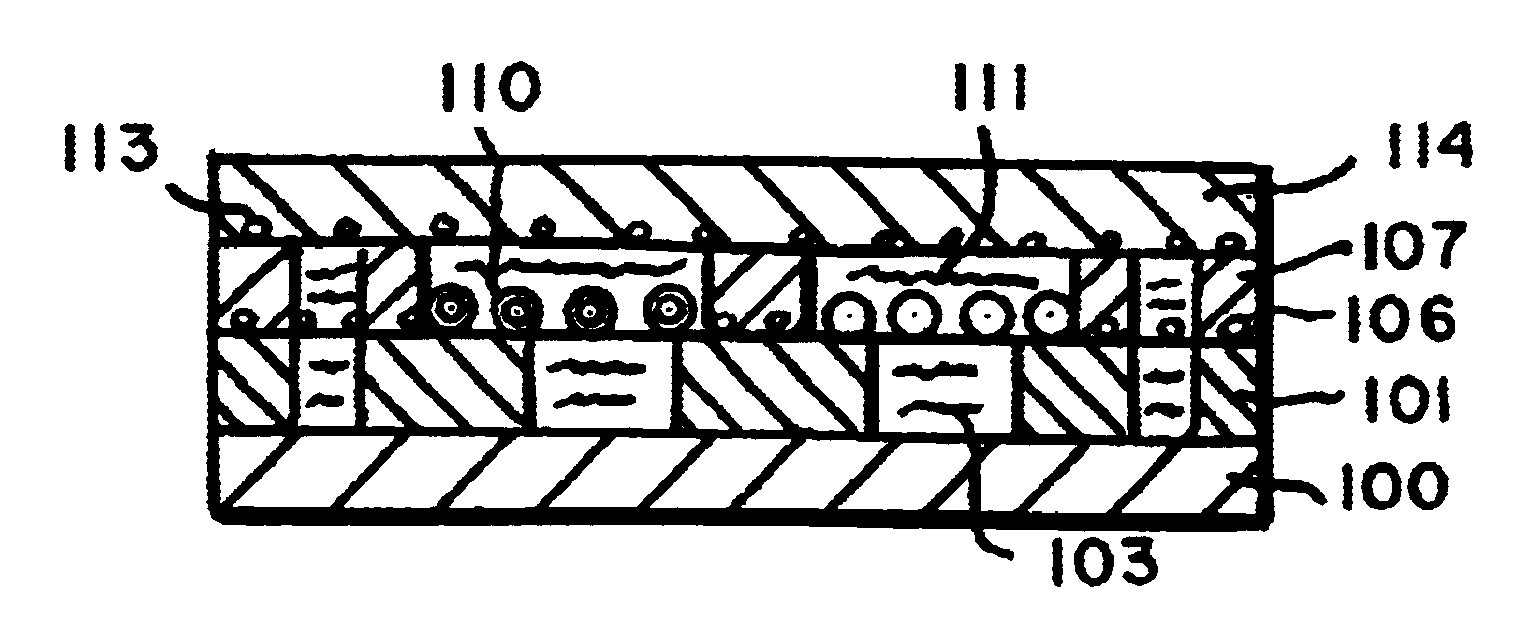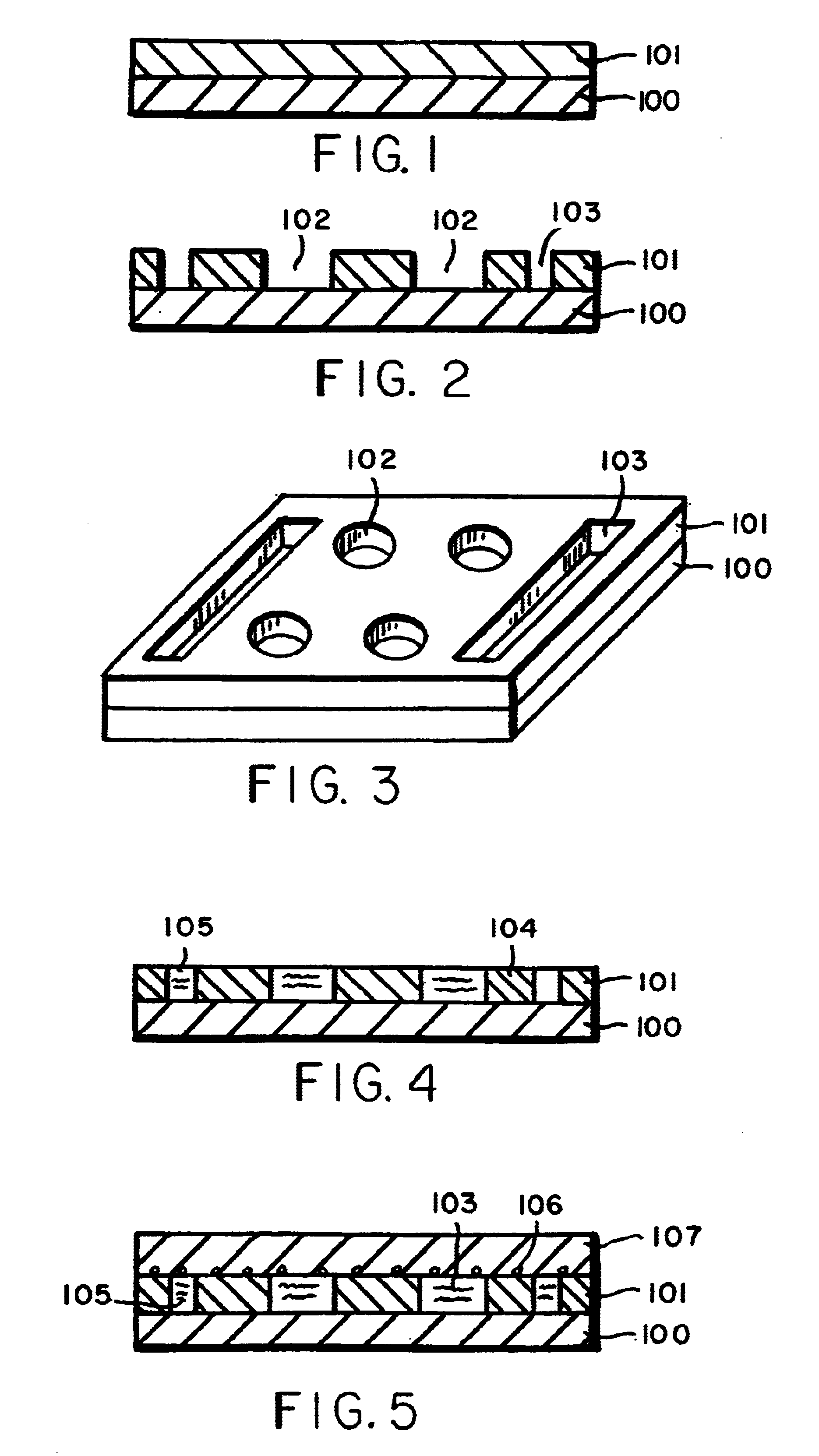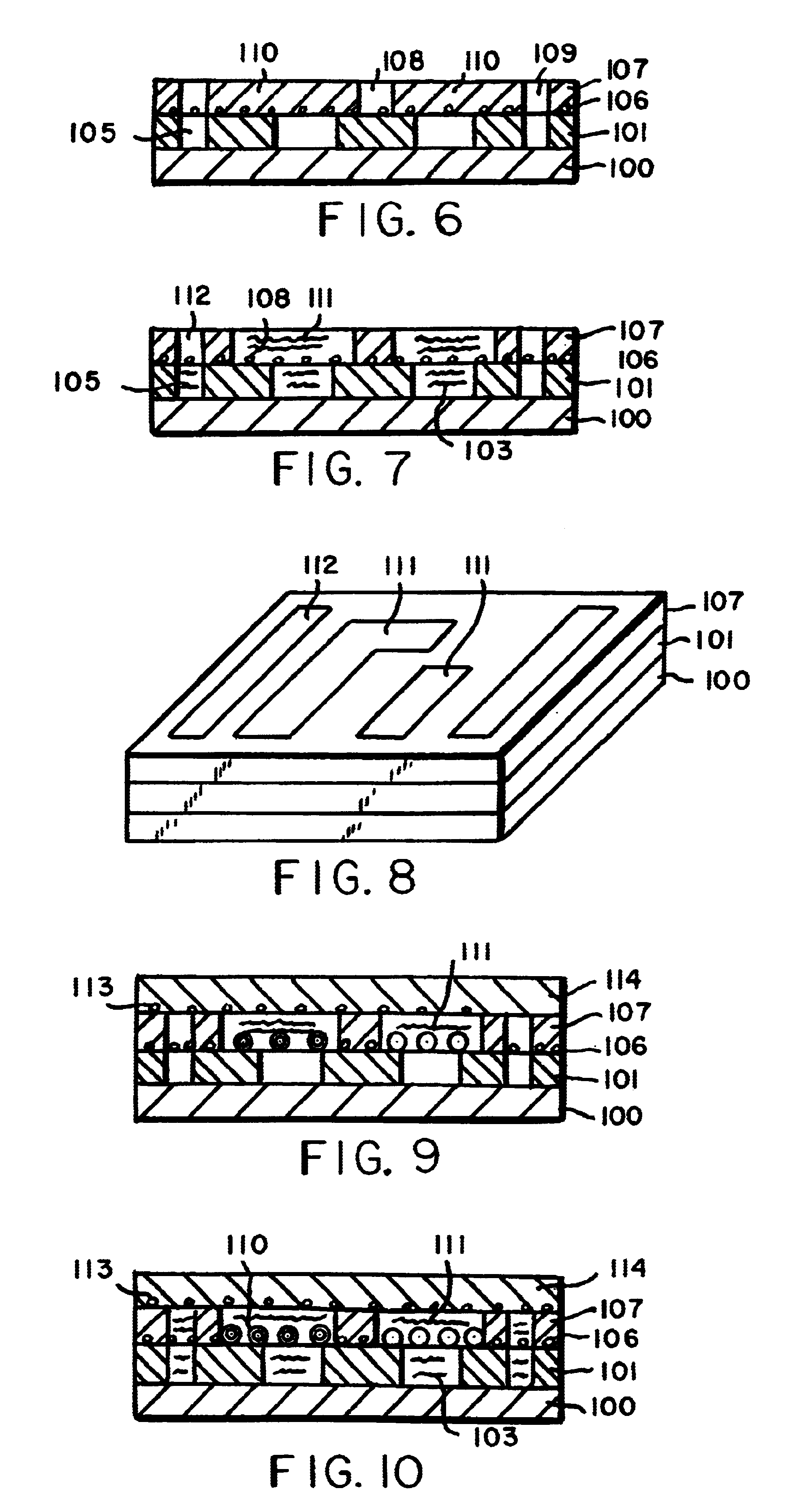Sequential build circuit board
a new type of circuit board and build technology, applied in the direction of photomechanical equipment, printed element electric connection formation, instruments, etc., can solve the problems of increasing complexity of mlbs, shrinking of resinous portion of the laminate, and inability to economically form the dimensions desired by the industry by the time of manufacturing, etc., to achieve significant increase in the rigidity of the board, increase the flexural strength or rigidity of the mlb
- Summary
- Abstract
- Description
- Claims
- Application Information
AI Technical Summary
Benefits of technology
Problems solved by technology
Method used
Image
Examples
Embodiment Construction
General
[0031]In the description that follows, the fabrication of an MLB in accordance with the process of the invention will be described first. Materials suitable for use in the process steps will be discussed following the description of the process. In the described processes, unless otherwise stated and for purposes of illustration, the supporting structure for sequential build of the MLB is an electrically conductive temporary platen though it should be understood that other substrates may be used including those that might become a permanent part of the MLB. Examples of such permanent substrates include, for example, a housing for an item of electronic equipment, a ground or power plane, etc. Dielectric coatings used in the process may be Imaged by laser ablation or by exposure and development. Imaging details will be given in the description below for the first disclosed imaging sequence and in the discussion of imaging materials. Thereafter, for brevity, imaging details will...
PUM
| Property | Measurement | Unit |
|---|---|---|
| diameter | aaaaa | aaaaa |
| diameter | aaaaa | aaaaa |
| diameter | aaaaa | aaaaa |
Abstract
Description
Claims
Application Information
 Login to View More
Login to View More - R&D
- Intellectual Property
- Life Sciences
- Materials
- Tech Scout
- Unparalleled Data Quality
- Higher Quality Content
- 60% Fewer Hallucinations
Browse by: Latest US Patents, China's latest patents, Technical Efficacy Thesaurus, Application Domain, Technology Topic, Popular Technical Reports.
© 2025 PatSnap. All rights reserved.Legal|Privacy policy|Modern Slavery Act Transparency Statement|Sitemap|About US| Contact US: help@patsnap.com



